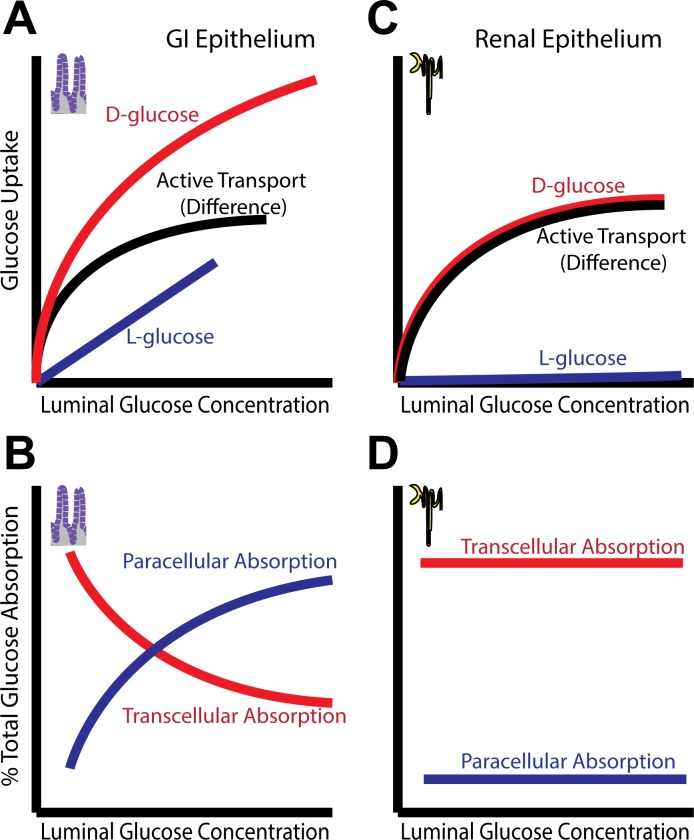Fig. 2.
Comparison of interactions between active and passive transport in two different epithelia. A: in gastrointestinal (GI) epithelium, SGLT1-mediated Na+-glucose cotransport activates Na+/H+ exchanger (NHE3)-mediated Na+ absorption and also increases paracellular permeability to small molecules. Together with the osmotic gradient generated by transcellular transport, the increased paracellular permeability allows enhanced passive glucose uptake, as measured by l-glucose (which is not transported by SGLT1) by solvent drag, thereby increasing overall nutrient absorption. B: at high luminal glucose concentrations, paracellular flux via solvent drag can represent a significant fraction of total glucose absorption. C and D: Na+-glucose cotransport in renal tubular epithelium does regulate tight junction permeability. Solvent drag does not significantly amplify transcellular glucose absorption, resulting in excess glucose in the urine at high blood glucose concentrations.

